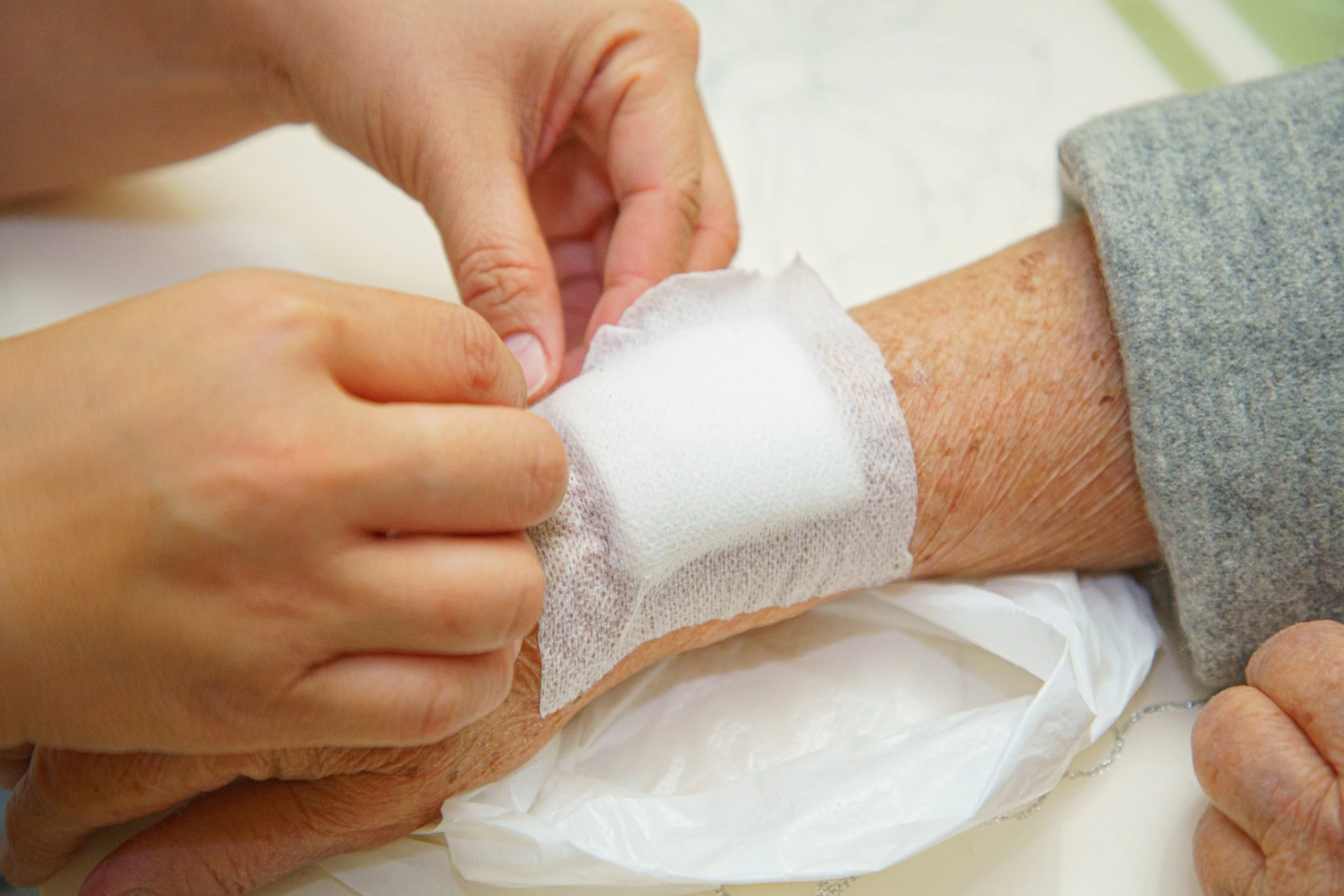Victims of negligence may be entitled to claim compensation for economic and emotional losses that resulted from laceration injuries. Cuts and lacerations are the type of injuries that one can sustain for a variety of reasons, from vehicle collisions to dog bites. In severe cases, treatments can require lengthy hospital stays and victims may be left with permanent scarring.
A laceration can cause disfiguration and lead the victim to suffer from psychological problems that require years of therapy to recover from. Speaking with a personal injury lawyer with experience in winning settlements for laceration cases helps victims discover the value of their case, and how to move forward with the legal process to gain compensation.
What Is a Laceration?
Lacerations occur when the body’s soft tissue is slashed or torn open. Minor lacerations can be treatable in a home environment. However, deep lacerations can cause serious pain and damage to tendons, ligaments, and muscles. Deep lacerations require medical attention sooner rather than later to best prevent infection.
The recovery time for a deeper laceration can last weeks or months, which can prevent someone from working and negatively impact daily life. Very severe lacerations can result in amputation, which could permanently restrict mobility and prevent one from carrying out normal activities. Deep lacerations result in serious scarring and can contribute significant emotional stress to a victim.
Types of Laceration Injuries Covered by Legal Compensation
Lacerations are typically much deeper than most cuts and can affect all three layers of the skin. Many different negligent acts can result in someone suffering from lacerations, but some circumstances are more common than others.
In New York, traffic accidents are responsible for causing more injuries leading to emergency department visits and hospitalizations than any other type of accident, excluding slip and falls. Lacerations and soft tissue injuries are among the most common injuries after a car crash. Though typically not life-threatening, these injuries are among the most painful and long-term conditions obtained from traffic accidents in New York.
Specific laceration injuries frequently suffered in car accidents include:
- Cut lacerations are the most common type of lacerations suffered in car accidents. Cut lacerations occur when a sharp object, such as glass or metal, cuts through the skin.
- Split lacerations are some of the most excruciating and severe injuries, occurring when two object crush the same area of the body. The nature of the compression causes the skin and muscle tissues to tear open.
- Grinding compression lacerations occur when an object grazes the skin, causing it to raise and peel back. The tissue underneath tears as the epidermis is badly compromised.
- Over-stretching injuries occur when an object strikes the skin at an angle. The object pushes or pulls the skin upon impact until it tears. Over-stretching typically results in deep cuts that expose multiple layers of tissue.
Millions of workers suffer preventable workplace injuries every year. Statistics differ from study to study, but lacerations and cuts often rank as the second or third most frequent workplace injury. Approximately 30% of nonfatal workplace injuries involve cuts or lacerations. Laceration injuries that frequently occur in the workplace most commonly involve the following hazards/causes:
- Lack of established safety procedures
- Improper training
- Failure to wear cut resistant gloves or wearing improper gloves for the task
- Using an improper tool for a task or using a tool improperly
- Tools in poor condition (cracked or broken handle, dull blade, slippery from exposure to a substance, etc.)
- Missing or improperly adjusted guarding while using a tool
- Poor lighting or reduced visibility
Establishing Liability for a Lawsuit
Establishing responsibility for an accident that results in lacerations and scarring depends on the circumstances surrounding the incident. It’s imperative that all possible evidence is gathered for these types of claims. Working with an experienced attorney can ensure all necessary information is collected to establish liability and strengthen a claim against a party to prove:
- The defendant owed the victim a duty of care
- The defendant was negligent in their duty of care
- The defendant’s actions resulted in the victim suffering a personal injury
OSHA and Duty of Care in Workplace Injuries
Under the Occupational Safety and Health Act of 1970, an employer/business has a duty of care to keep all employees safe in the workplace. This includes enforcing federally regulated safety standards and providing any necessary safety equipment to each employee. Failing to adhere to these regulations can result in a court ruling they were negligent in their duty of care.
New York State lawfully requires employers to purchase workers’ compensation insurance to provide payment for medical expenses, rehabilitation, and partial wage reimbursement if a person suffers an injury in the scope of employment. All workers are eligible to apply for this form of compensation whether or not their own negligence contributed to the accident.
It’s important to understand that filing for workers’ compensation does not bar an individual from suing an employer for negligence that caused harm or injury. In this case, an OSHA violation may be used as evidence when filing a personal injury lawsuit, while still collecting workers’ compensation. This process can quickly grow complicated but working with an expert personal injury attorney with years of experience can make it a lot easier.
Motor Vehicle Accidents
Anyone using a public road has a duty to avoid injuring other road users where feasibly possible. When someone suffers lacerations from involvement in a motor vehicle accident, they may be able to claim compensation for the pain and suffering they experienced. If a driver or pedestrian fails to comply with traffic laws and causes an accident, it is likely that a court will hold them liable for any resulting laceration injuries.
Laceration Settlement Amounts
It’s hard to estimate a case value without knowing all the specific details. Laceration injuries (particularly to the face) can be difficult to value for settlement because they don’t always stand alone after an accident. This is to say that lacerations tend to occur in addition to other injuries. However, it’s possible to look at other settlements awarded in the recent past to better understand the typical ranges of these cases.
Note: Sobo & Sobo does not cite actual settlement values for our clients’ cases, even anonymously, due to confidentiality agreements. From time to time, we may include individual case histories and US settlement values published by reliable sources. These should not be interpreted as suggesting future outcomes for Sobo & Sobo clients.
- $15,000 on behalf of a 2-year-old who sustained facial lacerations from embedded glass in a car accident, causing facial scarring.
- $52,500 on behalf of a victim who fell off a bicycle on an uneven sidewalk outside a home. She sustained lacerations to the face and body, scarring, and a concussion. The homeowners were found negligent for failing to maintain a safe sidewalk.
- $200,000 on behalf of a 37-year-old woman who was bit by a dog and suffered face and lip lacerations. She was left with facial scarring and disfigurements and developed severe emotional distress. The dog owners were found liable for failing to restrain it.
Compensation from Laceration Lawsuits
Laceration injury cases vary widely in value, and the best way to build the strongest claim for maximum compensation is to seek the help of quality legal counsel.
All personal injury claims are unique, and the amounts awarded are dependent on the circumstances surrounding the injury. No two laceration injuries are the same when looking from a legal settlement valuation standpoint. There are significant factors that go into determining settlements in these injury claims:
- Age: Compensation values are typically greater the younger a person is
- Permanency: A permanent scar or debilitation from the laceration will have greater value than a wound that heals without scarring
- Location: The more visible the laceration/scar, the greater the value of the claim will be
- Severity: The more severe the injury, the greater the claim value
For example, a small facial laceration on a child typically holds greater value than a small arm laceration on an adult.
Values that can be expected laceration injury compensation include:
- All past, present, and future medical expenses related to the injury
- Damages for physical and mental pain and suffering
- Mental anguish or trauma
- Costs for loss of income, both past and future if the victim loss the ability to work
What Are the Long-Term Effects of Lacerations and Scarring?
Deep lacerations can have a serious impact on someone’s life; therefore, laceration compensation claims are necessary. Long term damage can occur to the muscles, ligaments, tendons, and bones, and it can result in severe scarring or disfigurement. Scars are considered secondary injuries that result from initial damage to the skin.
The severity of lacerations and scarring depend on the severity of a primary injury or the wound itself. The level of severity varies more when it comes to which part of the body is injured, which can influence the value of laceration compensation claims. A small scar on the face is more severe than a small scar on the arm. Victims with facial scarring often endure anxiety and emotional stress, which can also affect their ability to work.
Living with scars can bring back unwanted memories for victims when they’re reminded of their accidents. In addition to physical damage impacting day to day life, there can be physical pain attributed to the scar itself. Certain types of scarring can restrict normal movement even when an injury is healed.
Ultimately, any type of permanent scarring can cause psychological damage. Victims who wish to understand how laceration and scarring claims work should not hesitate to speak with an experienced personal injury attorney.
How are Lacerations and Scars Treated?
Deep lacerations require medical attention as soon as possible. If a deep laceration is not treated quickly enough, the delay could cause a serious infection that makes scarring more severe. If medical care was delayed at a medical facility, a victim could be entitled to claim compensation for not being treated in a timely manner.
The basic treatment for most deep lacerations includes a professional thoroughly cleaning the wound before stitching or gluing it closed. X-rays are sometimes taken to establish any internal damage or broken bones. Further, even less severe lacerations sometimes require skin grafts.
It is not possible to totally remove scarring, though there are specific treatments that aim to reduce how noticeable a scar might be. Some scars need laser therapy or specific injections to help reduce swelling. If the severity of a scar restricts movement, surgery may be required to resolve the problem. It’s possible to include these treatment costs in laceration claims depending on the nature of the accident and what insurance covers.
File a Laceration Injury Claim
The experts at Sobo & Sobo have worked on many successful laceration and scarring claims in the past. Our attorneys have over 50 years of experience and understand how the physical and mental pain from personal injuries can be exhausting. We are ready to hear your story and start fighting for your rights. Call 855-GOT-SOBO today for a no-risk, free initial consultation, or contact online.




